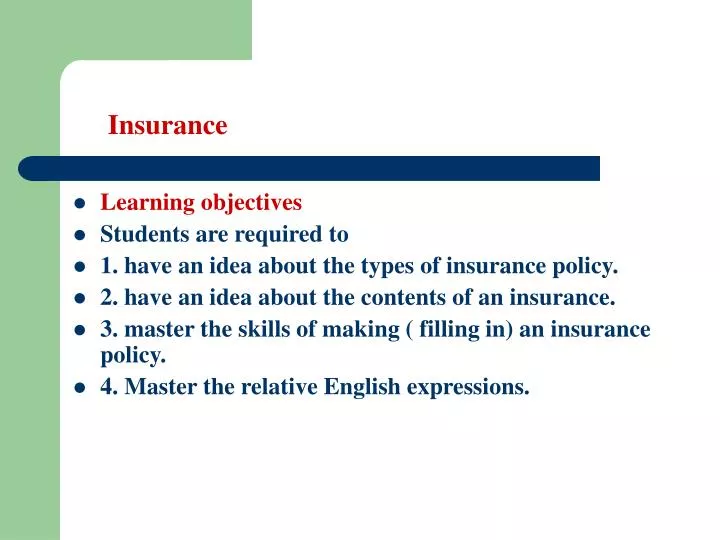The Definitive Guide to Pacific Prime
The Definitive Guide to Pacific Prime
Blog Article
The smart Trick of Pacific Prime That Nobody is Discussing
Table of ContentsHow Pacific Prime can Save You Time, Stress, and Money.Our Pacific Prime PDFsExcitement About Pacific PrimeIndicators on Pacific Prime You Should Know
In most states, the insurance company is required to send you a copy of the changes to your plan. It is important that you check out Endorsements or Bikers so you comprehend just how your plan has actually transformed and if the policy is still adequate to meet your needs. To obtain a copy of your insurance plan, please call your insurance policy agent or business.
The Institute of Medicine (IOM) Committee on the Repercussions of Uninsurance launches a prolonged assessment of evidence that addresses the significance of medical insurance coverage with the magazine of this record. Insurance coverage Matters is the first in a series of six reports that will certainly be issued over the following two years documenting the fact and repercussions of having an approximated 40 million individuals in the United States without wellness insurance policy coverage.

The Basic Principles Of Pacific Prime
The goal of this collection of research studies is to redouble plan focus on a longstanding issue. Adhering to the longest financial expansion in American background, in 1999, an estimated one out of every six Americans32 million grownups under the age of 65 and greater than 10 million childrenremains uninsured (Mills, 2000).

10 percent of the populace make up 70 percent of healthcare expenditures, a connection that has actually continued to be constant over the previous three years (Berk and Monheit, 2001) - global health insurance. Therefore wellness insurance proceeds to serve the feature of spreading out risk also as it significantly funds routine treatment. From the point of view of wellness treatment suppliers, insurance carried by their patients aids protect a revenue stream, and communities take advantage of economically feasible and steady healthcare experts and establishments
Federal government offers medical insurance to populaces whom the exclusive market might not offer successfully, such as impaired and elderly individuals, and populations whose access to health and wellness care is socially valued, such as children and expecting women. The best ends of wellness insurance policy coverage for the individual and communities, including workplace communities of staff members and companies, are enhanced health and wellness outcomes and high quality of life.
Unknown Facts About Pacific Prime
Workers rank medical insurance first by far in value among all the benefits provided in the workplace (Salisbury, 2001). Although there have actually been sizable investments of individual and public funds to supply medical insurance, lots of people still have no protection. In spite of extensive reporting of survey findings and healthcare study results, the public stays baffled and misinformed regarding Americans without wellness insurance and the ramifications of lacking protection.

Without doubt, the complexity of American wellness care financing mechanisms and the wide range of sources of information add to the general public's confusion and hesitation concerning medical insurance data and their analysis. This record and those that will certainly follow purpose to distill and present in conveniently reasonable terms the considerable study that births on inquiries of medical insurance coverage and its value.
Fifty-seven percent of Americans surveyed in 1999 believed that those without health insurance policy are "able to obtain the treatment they need from physicians and hospitals" (Blendon et al., 1999, p. 207). In 1993, when national focus was concentrated on the issues of the without insurance and on pending health and wellness care legislation, simply 43 percent of those surveyed held this belief (Blendon et al., 1999).

They likewise obtain less precautionary services and are much less likely to have regular look after chronic conditions such as high blood pressure and diabetic issues. Chronic illness can cause expensive and disabling difficulties if they are not well handled (Lurie et al., 1984; Lurie et al., 1986; Ayanian et al., 2000). One national study asked more than 3,400 grownups about 15 highly significant or dark conditions.
The Buzz on Pacific Prime
Added evidence exists later on in this phase in the conversation of insurance coverage and accessibility to healthcare. https://pxhere.com/en/photographer/4223924. Individuals without medical insurance are young and healthy and choose to go without coverage. Nearly fifty percent (43 percent) of those surveyed in 2000 thought that individuals without health insurance policy are most likely to have health issue than people with insurance policy
Voters and plan manufacturers in focus group conversations characterize those without insurance coverage as youths who have the possibility to be covered and feel they do not need it (Porter Novelli, 2001). Contrasted to those with at the very least some private protection, the uninsured are less most likely to report being in superb or great health (Company for Medical Care Research and Top Quality, 2001).
RESOURCE: web link Center for Cost and Funding Studies, Company for Health Care Study and High quality, based upon MEPS information. Young person in between 19 and 34 are even more likely to do not have medical insurance than any various other age. This is mainly since they are much less usually eligible for employment-based insurance coverage because of the nature of their task or their short tenure in it.
The understanding that people without insurance coverage have better-than-average wellness follows from confusing the relatively young age account of the uninsured with the better health, on average, of more youthful individuals. This covers the web link between health and wellness standing and health and wellness insurance policy. For those without accessibility to work environment wellness insurance coverage, bad health is a potential barrier to acquiring nongroup coverage due to the fact that such coverage might be extremely valued, omit preexisting conditions, or be simply inaccessible.
Report this page